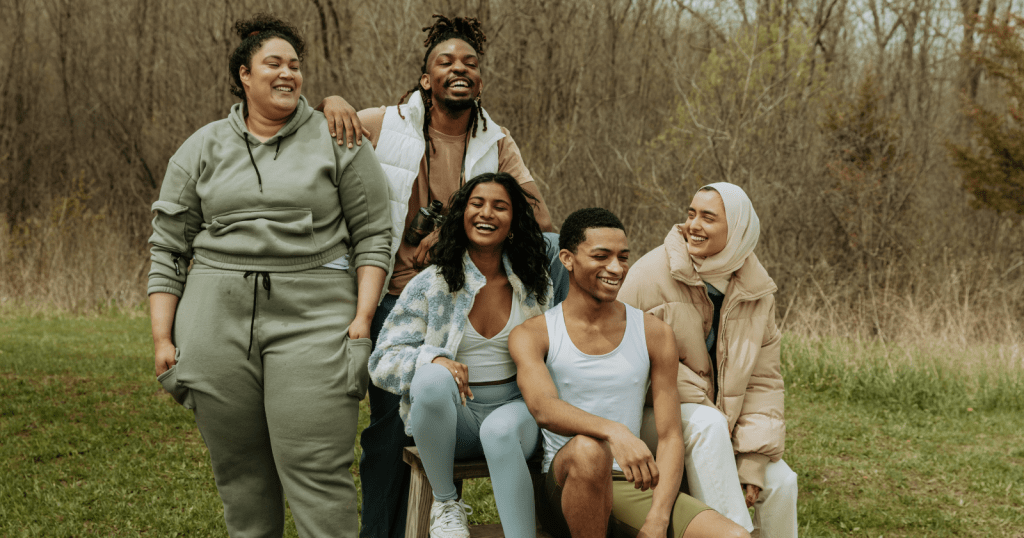In our ever-evolving world, understanding the diverse spectrum of gender identities is not just about keeping up with new terminology—it’s about respecting the identities and experiences of others.
As we move into 2025, the conversation around gender is more nuanced than ever, reflecting a broader societal shift towards inclusivity and acceptance.
This article explores ten essential gender identity terms that have gained prominence and are crucial for fostering an inclusive environment.
Whether you’re a professional aiming to create a supportive workplace, a parent seeking to understand your child better, or simply someone who values being informed, this guide will equip you with the knowledge you need.
1) Cisgender
Have you ever felt that the gender you were assigned at birth fits like a glove? Then you might identify as cisgender.
This term is vital in discussions about gender because it normalizes the conversation, ensuring that being transgender isn’t the only gender identity explicitly defined.
When discussing gender inclusivity, it’s helpful to recognize that everyone has a gender identity, including those whose experience aligns with their birth-assigned sex.
Encourage inclusive language in your environment by using terms like “cisgender” in relevant discussions, which acknowledges the diversity of gender experiences.
2) Transgender
A transgender person is someone whose gender identity differs from the sex they were assigned at birth. This term encompasses a broad range of gender experiences and is a critical part of the gender conversation.
Dr. Lisa Richardson, a psychologist specializing in gender identity, notes, “Understanding and respecting someone’s use of the term transgender is a fundamental part of acknowledging their true self.”
To support transgender individuals, educate yourself and others about the importance of using chosen names and pronouns, which are fundamental to a person’s identity and well-being.
3) Non-binary
Non-binary is an umbrella term for gender identities that are not exclusively masculine or feminine. Non-binary individuals might identify as having two or more genders, no gender, or a fluctuating gender identity.
“Recognizing non-binary identities challenges traditional perceptions of gender and encourages a more fluid understanding of this aspect of human identity,” states author and gender studies expert Jordan Sullivan.
In practice, supporting non-binary people can be as simple as offering gender-neutral restrooms and providing options beyond ‘male’ and ‘female’ on forms.
4) Genderqueer
Similar to non-binary, ‘genderqueer’ is a term used by individuals who do not subscribe to conventional gender distinctions but might identify with both, neither, or a combination of male and female genders.
The diversity within this identity can manifest in unique expressions and experiences.
People identifying as genderqueer may see themselves as a mix of genders, as a separate gender, or they may reject gendered labels entirely.
To engage respectfully with someone who identifies as genderqueer, always use their specified pronouns and strive to avoid imposing traditional gender norms in your interactions.
For those looking to explore literature that delves into the genderqueer experience, “Gender Outlaws: The Next Generation” by Kate Bornstein and S. Bear Bergman is highly recommended.
5) Genderfluid
Genderfluid refers to a gender identity that may change or fluctuate over time.
A genderfluid person might feel more masculine some days and more feminine on others, or they may feel like neither at times. It’s important to understand that the variability of their gender expression is a valid and authentic experience.
Creating a supportive environment for genderfluid people can include checking in on preferred pronouns regularly and being flexible with your expectations of gender expression.
6) Agender
Agender individuals typically do not identify with any gender. They might describe themselves as being gender neutral or lacking gender.
For those who are agender, gender often plays a minimal or nonexistent role in their personal identity.
To support agender people, recognize and validate their experience by respecting their views on their lack of gender identity, and be careful to use the correct language that reflects their identity.
7) Bigender
Bigender people identify with two distinct genders, either simultaneously or varying between them over time.
This might mean a combination of male and female, but can also include other gender identities.
When interacting with bigender individuals, it’s crucial to understand which pronouns are appropriate at different times, if their gender identity changes.
This respect and acknowledgment can significantly impact their comfort and acceptance in social settings.
8) Demiboy and Demigirl
Demiboy and demigirl are terms used by individuals who partially, but not wholly, identify as male or female, respectively.
They may or may not identify partially with another gender. These terms help people express a nuanced identity that doesn’t conform to traditional gender binaries.
Encouraging open conversations about the spectrum of gender identities and creating spaces where individuals can express their gender without pressure or expectation are important ways to support demiboys and demigirls.
9) Two-Spirit
This term is specifically used by some Indigenous North American cultures to describe a person who embodies qualities or fulfills roles of both male and female genders.
Two-Spirit is a cultural identity that holds significant historical and spiritual importance and should be respected as such.
Educating oneself about the cultural, historical, and individual significance of being Two-Spirit can foster deeper respect and inclusion.
10) Pangender
While not a gender identity per se, pansexuality is relevant in discussions about gender because it denotes an attraction to people regardless of their gender identity.
They might feel that their identity is not limited to the existing definitions of gender.
To support pangender people, inclusivity could mean advocating for systems and language that acknowledge and cater to a wide spectrum of gender identities, beyond even what is commonly recognized.
Conclusion
As we continue to learn and grow in our understanding of the diverse experiences of those around us, let us remember the words of Maya Angelou, “We all should know that diversity makes for a rich tapestry, and we must understand that all the threads of the tapestry are equal in value no matter their color.”
Each term not only defines a type of gender identity but also invites us to learn and appreciate the complex individual experiences behind the labels.
By educating ourselves and adjusting our behaviors and environments, we can all contribute to a world where everyone is respected for who they are.

Alexandra Rivera is a passionate educator and advocate with over a decade of experience championing sexual and gender equality. With a background in sociology and gender studies, Alexandra has dedicated her work to promoting inclusivity, understanding, and empowerment for individuals of all identities. Through education, storytelling, and advocacy, she strives to break down stigmas and foster a world where everyone feels seen, respected, and celebrated. She is also a self-proclaimed artist channeling her creative side on pottery and sketching.





